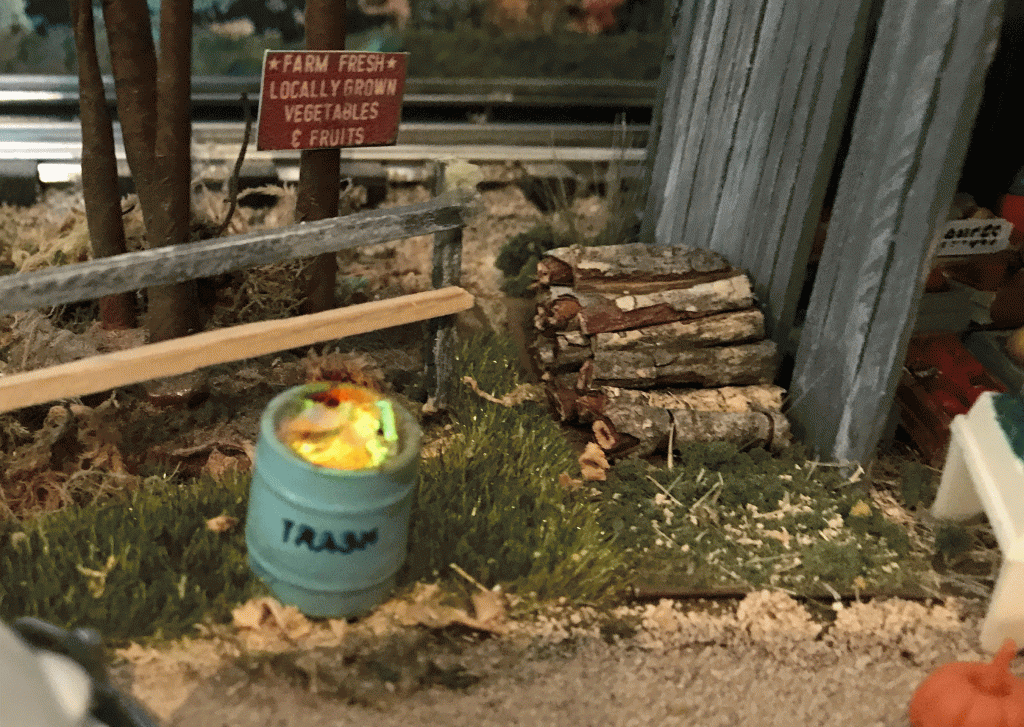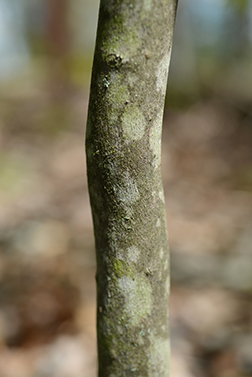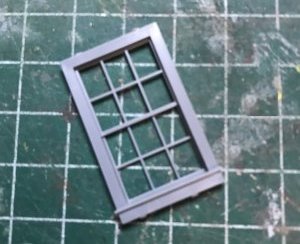A stack of fire wood is a simple detail that can be repeated in numerous places on you layout, and yet they will never be out of place, and it will never seem like there are too many. A stack of fire wood works nicely beside any residence, a campground, or an outdoor business, like a produce stand or flea market,
Time and Difficulty
A super-simple project that can be completed in a few minutes.

Select Hardwoods
The best looking fire wood is made of real wood. There are two criteria I look for a natural wood twig to use for firewood. First, a tight grain and second, an outer layer that looks like tree bark. A tight grain is necessary so the the cut wood retains its solid, wood-like appearance. Some twig varieties will fray or split on the ends giving an unacceptable appearance. The second quality is a nice outer bark. Not only should the outer layer look like actual tree bark, but it should not fall off when it dries.
I have found three plants varieties that produce tight-grained non-fibrous twigs with an outer layer that resembles tree bark. The three varieties I recommend are:
- Maple
- Dogwood
- Azalea




Once you’ve selected the wood, use a jig to cut it to length. Wider pieces can be split, just like real wood. Use carpenter’s glue to stack and secure your woodpile.


